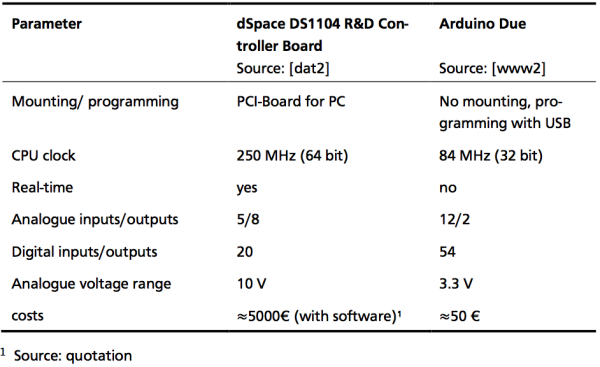Controller
In order to enable the closed loop control of the system, several requirements for the controller must be met:
- low response time, real-time control if possible
- 4 quadrant motor control (allows the motor to apply a breaking torque)
- interchangeable and arbitrary control algorithms, preferably with MATLAB compatibility
The decision was met to use a two stage control hardware set-up with a programmable controller and an underlying dedicated motor controller (Abb. 1). The advantage of this set up is that the effort for the motor control is reduced by using a controller which is already designed to work with the actuator and also serves as amplifier. The set point for the motor controller is provided by the programmable controller. As motor controller, the ESCON Module 50/5, 4-quadrant servo controller (maxon motor) is used. This controller can be supplied with a set point either for the motor current or the motor speed by the programmable controller.
<imgcaption image1|Design of the hardware and communication for the control loop>
 </imgcaption>
</imgcaption>
As programmable controller, two options are considered: a dSpace single-board controller and an Arduino controller, with the latter one being a cheaper open-source option. Both allow the import of control algorithms designed in MATLAB. Abb. 2 shows a comparison of the key figures of both controllers. Although the dSpace Controller is clearly the more sophisticated option, its costs exceed the budget for the test-bed, so the Arduino is the only economically feasible option. Another ad- vantage is that the Arduino can operate on its own while the dSpace Controller must be operated in the PCI-slot of a desktop computer. A drawback of the Arduino is the analogue voltage range of 0-3.3 V, which is lower than many sensor outputs (usually 0-10 V), so a voltage divider circuit must be used in this case to adapt to the allowed voltage range.
<imgcaption image2|Key data of the dSpace and the Arduino controller>
 </imgcaption>
</imgcaption>
